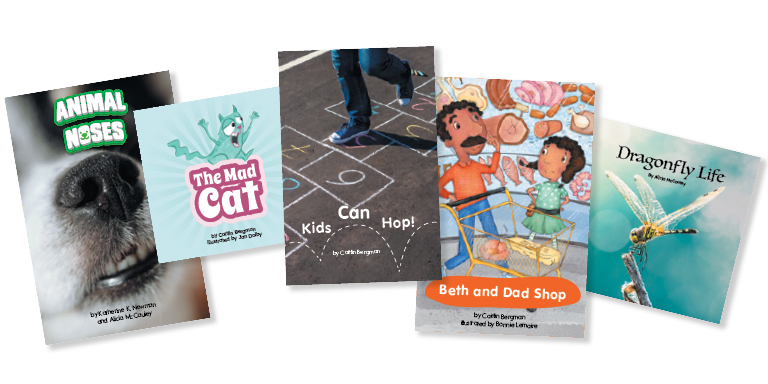Supplemental Small-Group Reading Instruction
Not all reading programs come with the essential, targeted small-group instruction that ensures all students are being met at their point of need.
To address this, Being a Reader Small-Group Reading Sets, a component of the comprehensive core reading program, Being a Reader™, is available as a supplement to any comprehensive, whole-class reading program.
These easy-to-use resources help K–2 students build and practice phonics and foundational skills, improve language comprehension, and develop independent thinking skills.

How It Works
The instruction in Being a Reader Small-Group Reading Sets 1–12 is based on a developmental continuum that spans kindergarten through second grade. Skills, strategies, and texts become more complex as students advance.
Differentiated Small-Group Instruction
An initial placement assessment determines the entry point for each student. The teacher then groups students with similar needs to provide focused instruction. The small-group design enables teachers to observe and monitor student progress and make informed instructional decisions.
Predictable Lesson Structure
A predictable lesson structure offers young learners a stable framework and routine, fostering a conducive environment for focused learning. For teachers, this predictability streamlines planning and instruction. Teachers have all of the tools and guidance needed to confidently advance students or provide targeted support.
Support for Emerging Readers
Sets 1–5 focus on phonological awareness; phonics, including decoding and spelling; and high-frequency words. The lessons and decodable texts in these sets support students in the alphabetic and spelling-pattern phases of reading development. Additional decodables in each classroom package ensure that students have ample practice reading connected text.
Support for Developing Readers
Sets 6–12 focus on fluency, provide explicit instruction in reading strategies, and place an increasing emphasis on self-monitoring and self-correcting.
| Grade Level | Instructional Focus |
|---|---|
| Kindergarten (Sets 1–4) | Short vowels, single consonants, CVC words Initial, final, medial sounds Consonant blends, digraphs, trigraphs Inflectional endings: -s, -ed, -ing Long vowels, final -e, vowel patterns, r-controlled vowels |
| Grade 1 (Sets 3–8) | Consonant blends, digraphs, and trigraphs Inflectional endings: -s, -ed, -ing Long vowels, final -e, vowel patterns, r-controlled vowels Silent letters and two-syllable decoding Word recognition and analysis Fluency, comprehension, independent thinking |
| Grade 2 (Sets 5–12) | Complex vowels Silent letters, two-syllable decoding Word recognition and analysis Fluency Comprehension and generating independent thinking with complex texts |
NOTE: Students who complete Sets 1–5 will have mastered first-grade standards for single syllable phonics.
Additional instruction is needed beyond Set 5 for students to engage in polysyllabic decoding.
High-Quality Decodable Texts and Trade Books
Lessons in Sets 1–6 include decodable texts, while Sets 7–12 are built around high-quality fiction and nonfiction trade books that span a range of genres, ensuring both wide appeal and equitable representation.


Instructionally Aligned Independent Practice with CC PAL
Available separately, the CC PAL app gives students daily, targeted, independent retrieval practice aligned to their Being a Reader Small-Group Reading instruction. With “just-right” interactive practice activities and connected text reading, students get the engaging, effective practice they need for foundational skills mastery, while educators receive real-time progress tracking data.

Aligned with SIPPS
For schools also looking for Tier II or Tier III intervention, SIPPS® provides an aligned scope and sequence to Being a Reader Small-Group Reading Sets instruction.
Using both programs together:
- Ensures that ALL students master foundational reading skills
- Provides students who need additional intervention with seamless support through an aligned scope and sequence, common routines, and a similar lesson structure

Digital Resources
- Learning Portal: All essential digital resources plus access to digital texts for Sets 7–12
- BookRoom! app (digital versions of books in Sets 1–6)
- ClassView Pro: Data management for individual students and small groups
- CC AI Assistant is a generative AI-powered conversational agent that delivers immediate, personalized answers to implementation questions

Get Sample Lessons
Access free sample lessons from Being a Reader Small-Group Reading.